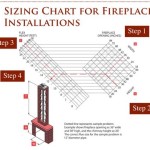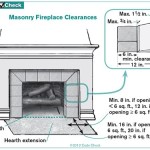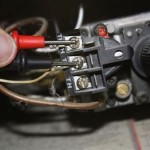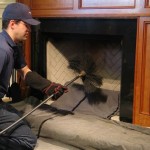Wood Burning Fireplace Grates: A Comprehensive Guide
Wood burning fireplace grates are essential components for any traditional fireplace designed to burn solid fuel. These grates elevate the firewood, allowing for optimal airflow, more efficient combustion, and easier ash removal. Understanding the different types, materials, and features of fireplace grates is crucial for selecting the right option that maximizes fireplace performance and safety.
The primary function of a fireplace grate is to create a space beneath the firewood pile. This space allows air to circulate freely, feeding the flames and promoting more complete combustion. Without a grate, the firewood would sit directly on the floor of the fireplace, restricting airflow and resulting in a smoldering fire with poor heat output and increased smoke production. This incomplete combustion also leads to a greater buildup of creosote in the chimney, increasing the risk of chimney fires.
The selection of a suitable fireplace grate depends on various factors including fireplace size, frequency of use, types of wood burned, and desired aesthetic. Investing in a high-quality grate is a worthwhile consideration since it directly impacts the efficiency and safety of the fireplace system.
Types of Fireplace Grates
Fireplace grates are available in various designs, each offering unique advantages. The structural design of the grate influences airflow, durability, and fuel capacity. Understanding these different types will assist in making an informed selection.
Standard Grates: These are the most common types of fireplace grates, consisting of parallel bars welded together to form a rectangular or trapezoidal shape. They are generally made of steel or iron and are widely available at various price points. Standard grates are suitable for occasional use and smaller fireplaces.
Grate Heaters: These grates incorporate tubes or channels that circulate air heated by the fire. The heated air is then expelled into the room, increasing the overall heating efficiency of the fireplace. Grate heaters can significantly improve heat output, but they are typically more expensive than standard grates and require careful installation.
Self-Feeding Grates: Designed to automatically advance firewood as it burns, self-feeding grates maintain a consistent fire and reduce the need for frequent manual adjustments. They typically feature a sloped design that allows gravity to feed the firewood forward. These grates are well-suited for extended burning periods and larger fireplaces.
Cast Iron Grates: Known for their durability and heat retention, cast iron grates are a popular choice for frequent fireplace users. Cast iron absorbs heat and radiates it back into the room, contributing to a more consistent and comfortable heat output. While more expensive than steel grates, cast iron grates can last for many years with proper care.
Arched Grates: This design features a curved or arched shape that helps to contain the firewood and prevent it from rolling out of the fireplace. Arched grates are particularly useful for fireplaces with a shallow firebox.
Bar Grates: This is designed with a sturdy construction with many bars spaced closely together, the Bar Grate can support a large amount of wood fuel and keep the fire burning for a longer amount of time.
Materials and Construction
The material and construction of a fireplace grate significantly affect its durability, heat resistance, and overall lifespan. Choosing a grate made from high-quality materials is essential for ensuring safe and efficient fireplace operation. The most common materials used in fireplace grate construction are steel and cast iron, each with its own set of properties.
Steel: Steel grates are generally more affordable than cast iron grates and offer good heat resistance. However, steel is susceptible to rust and warping over time, especially when exposed to high temperatures and moisture. To mitigate these issues, steel grates are often coated with a high-temperature paint or enamel. The gauge or thickness of the steel is also important; thicker steel provides greater durability and resistance to warping.
Cast Iron: Cast iron is a dense and durable material that excels at retaining and radiating heat. Cast iron grates can withstand high temperatures without warping or cracking, making them a long-lasting investment. The inherent weight of cast iron also provides stability, preventing the grate from shifting or tipping over during use. While cast iron grates are typically more expensive than steel grates, their longevity and performance make them a worthwhile consideration for frequent fireplace users.
Welding: The quality of the welds is a critical factor in the overall strength and durability of a fireplace grate. Poorly welded grates are prone to cracking or breaking, especially under the weight of a large firewood pile. Look for grates with strong, clean welds that are free from porosity or defects. Continuously welded grates, where each joint is welded along its entire length, offer superior strength compared to spot-welded grates.
Coatings: Many fireplace grates are coated with a high-temperature paint or enamel to protect them from rust and corrosion. These coatings also enhance the aesthetic appeal of the grate. Ensure that the coating is specifically designed for high-temperature applications and is free from harmful chemicals. Some coatings may release fumes when first heated, so it is advisable to burn the grate outdoors before using it indoors.
Key Features and Considerations
Beyond the type of grate and material, several key features and considerations can further enhance the performance and suitability of a fireplace grate. These features include grate size, bar spacing, leg height, and reinforcement structures.
Grate Size: Selecting the correct grate size is crucial for optimal fireplace performance. The grate should fit comfortably within the firebox without being too large or too small. A grate that is too large can obstruct airflow, while a grate that is too small may not provide adequate support for the firewood. Measure the width, depth, and height of the firebox before purchasing a grate. Generally, the grate should be a few inches shorter than the width and depth of the firebox to allow for ample airflow around the firewood.
Bar Spacing: The spacing between the bars of the grate affects both airflow and ash removal. Wider bar spacing allows for better airflow, promoting more complete combustion. However, wider spacing can also allow smaller pieces of firewood to fall through the grate, which can be a fire hazard. Narrower bar spacing provides better support for smaller pieces of firewood but may restrict airflow. A bar spacing of approximately 1 to 2 inches is a good compromise for most fireplaces.
Leg Height: The height of the legs on the grate determines the amount of space between the firewood and the floor of the fireplace. Higher legs provide better airflow, resulting in a hotter and more efficient fire. However, higher legs may also make it more difficult to load firewood into the fireplace. A leg height of 3 to 5 inches is typically sufficient for most fireplaces. Some grates feature adjustable legs, allowing you to customize the height to suit your specific needs.
Reinforcement Structures: Some fireplace grates incorporate reinforcement structures, such as crossbars or bracing, to increase their strength and durability. These structures help to distribute the weight of the firewood evenly and prevent the grate from warping or sagging over time. Look for grates with sturdy reinforcement structures, especially if you plan to burn large amounts of firewood or use the fireplace frequently.
Ash Removal: The design of the grate should facilitate easy ash removal. Grates with wider bar spacing and sufficient ground clearance allow ash to fall through and accumulate beneath the grate. This makes it easier to scoop out the ash with a shovel or ash vacuum without having to disturb the firewood. Some grates feature removable ash pans or trays that simplify the ash removal process even further.
Safety Considerations: When selecting and using a fireplace grate, it is essential to prioritize safety. Ensure that the grate is made from non-toxic materials and is free from sharp edges or protrusions that could cause injury. Always use a fireplace screen to prevent sparks and embers from escaping the fireplace. Never leave a burning fire unattended, and keep flammable materials away from the fireplace. Regularly inspect the grate for signs of damage or wear and replace it if necessary. Always follow the manufacturer's instructions for proper installation and use. It is also advisable to have the chimney inspected and cleaned annually by a qualified professional to prevent chimney fires.
Alternatives to Traditional Fireplace Grates: While traditional fireplace grates remain a popular choice, alternative options are available that offer unique advantages. These alternatives include fireplace baskets and andirons.
Fireplace Baskets: Fireplace baskets are metal containers, often made of wrought iron, designed to hold firewood. They offer a decorative alternative to traditional grates and can be particularly appealing for those seeking a more rustic or antique aesthetic. Baskets typically have a more enclosed design, which can help to contain the fire and prevent embers from escaping. However, baskets may not provide as much airflow as traditional grates, which can affect combustion efficiency.
Andirons: Andirons are pairs of decorative metal supports that elevate the firewood above the fireplace floor. They are typically made of cast iron or steel and come in a wide variety of styles and designs. Andirons offer a more minimalist approach to fireplace support, allowing for greater airflow and easier ash removal. However, they may not provide as much support as traditional grates, especially for large firewood piles. When using andirons, it is important to ensure that the firewood is stacked securely to prevent it from falling out of the fireplace.
Proper maintenance of a fireplace grate is vital to prolonging its lifespan and ensuring its continued functionality. Regular cleaning is essential to remove ash and soot buildup, which can corrode the metal and reduce its heat efficiency. Remove the grate from the fireplace when it is cool and use a stiff brush to scrub away any debris. For stubborn deposits, a mild detergent and water can be used. Ensure the grate is completely dry before returning it to the fireplace to prevent rust formation. Periodically inspect the grate for signs of damage, such as cracks, warping, or broken welds. If any damage is detected, replace the grate immediately to avoid safety hazards. When the fireplace is not in use, consider storing the grate in a dry location to protect it from moisture and corrosion. This preventative measure can significantly extend the life of the grate and maintain its performance over time.

Fireplace Grates For Wood Burning Fireplaces

Costway 31 Large Fireplace Grate For Outdoor Fire Pit Us

Costway 18 In Fireplace Log Grate Heavy Duty Steel Firewood Burning Rack Holder H9i 10n282 S The Home Depot

How To Measure Your Fireplace

Singlyfire Fireplace Grate 30 Inch Heavy Duty Firewood Stove Log Holder Cast Iron Wrought Wood Burning Rack For Indoor Outdoor Chimney Com
Fireplace Grates From Chimney Cricket

Keep Your Fire In The Right Place This Winter S Best Fireplace Grates

Fireplace Log Grates High Quality Friendly Fires

Fireplace Grate 20in Heavy Duty Racks For Inside Firewood Log Rack Holder Accessories Chimney Hearth Wood Stove Burning Indoor 8 Bars Fire Pit Outdoor Yahoo Ping

Home








